formerly eScholarship Editions


|
|
|
|
Your request for similar items found 20 book(s). | Modify Search | Displaying 1 - 20 of 20 book(s) | |
| 1. | 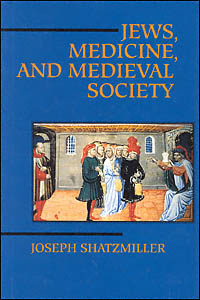 | Title: Jews, medicine, and medieval society Joseph Shatzmiller Author: Shatzmiller, Joseph Published: University of California Press, 1995 Subjects: Jewish Studies | Medieval History | European History | Medieval Studies | Medicine Publisher's Description: Jews were excluded from most professions in medieval, predominantly Christian Europe. Bigotry was widespread, yet Jews were accepted as doctors and surgeons, administering not only to other Jews but to Christians as well. Why did medieval Christians suspend their fear and suspicion of the Jews, allowing them to inspect their bodies, and even, at times, to determine their survival? What was the nature of the doctor-patient relationship? Did the law protect Jewish doctors in disputes over care and treatment?Joseph Shatzmiller explores these and other intriguing questions in the first full social history of the medieval Jewish doctor. Based on extensive archival research in Provence, Spain, and Italy, and a deep reading of the widely scattered literature, Shatzmiller examines the social and economic forces that allowed Jewish medical professionals to survive and thrive in thirteenth- and fourteenth-century Europe. His insights will prove fascinating to scholars and students of Judaica, medieval history, and the history of medicine. [brief] Similar Items |
| 2. | 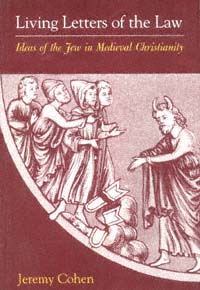 | Title: Living letters of the law: ideas of the Jew in medieval Christianity Author: Cohen, Jeremy 1953- Published: University of California Press, 1999 Subjects: Jewish Studies | Religion | Medieval History Publisher's Description: In Living Letters of the Law , Jeremy Cohen investigates the images of Jews and Judaism in the works of medieval Christian theologians from Augustine to Thomas Aquinas. He reveals how - and why - medieval Christianity fashioned a Jew on the basis of its reading of the Bible, and how this hermeneutically crafted Jew assumed distinctive character and power in Christian thought and culture.Augustine's doctrine of Jewish witness, which constructed the Jews so as to mandate their survival in a properly ordered Christian world, is the starting point for this illuminating study. Cohen demonstrates how adaptations of this doctrine reflected change in the self-consciousness of early medieval civilization. After exploring the effect of twelfth-century Europe's encounter with Islam on the value of Augustine's Jewish witnesses, he concludes with a new assessment of the reception of Augustine's ideas among thirteenth-century popes and friars.Consistently linking the medieval idea of the Jew with broader issues of textual criticism, anthropology, and the philosophy of history, this book demonstrates the complex significance of Christianity's "hermeneutical Jew" not only in the history of antisemitism but also in the broad scope of Western intellectual history. [brief] Similar Items |
| 3. | 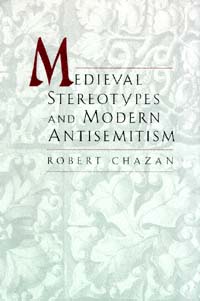 | Title: Medieval stereotypes and modern antisemitism Author: Chazan, Robert Published: University of California Press, 1997 Subjects: Medieval Studies | Jewish Studies | Medieval History | European History | European Studies Publisher's Description: The twelfth century in Europe, hailed by historians as a time of intellectual and spiritual vitality, had a dark side. As Robert Chazan points out, the marginalization of minorities emerged during the "twelfth-century renaissance" as part of a growing pattern of persecution, and among those stigmatized the Jews figured prominently.The migration of Jews to northern Europe in the late tenth century led to the development of a new set of Jewish communities. This northern Jewry prospered, only to decline sharply two centuries later. Chazan locates the cause of the decline primarily in the creation of new, negative images of Jews. He shows how these damaging twelfth-century stereotypes developed and goes on to chart the powerful, lasting role of the new anti-Jewish imagery in the historical development of antisemitism.This coupling of the twelfth century's notable intellectual bequests to the growth of Western civilization with its legacy of virulent anti-Jewish motifs offers an important new key to understanding modern antisemitism. [brief] Similar Items |
| 4. | 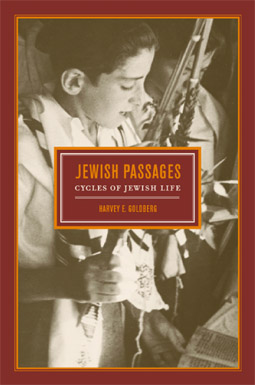 | Title: Jewish passages: cycles of Jewish life Author: Goldberg, Harvey E Published: University of California Press, 2003 Subjects: Jewish Studies | Middle Eastern Studies | Anthropology Publisher's Description: American or Middle Eastern, Ashkenazi or Sephardi, insular or immersed in modern life - however diverse their situations or circumstances, Jews draw on common traditions and texts when they mark life's momentous events and rites of passage. The interplay of past and present, of individual practice and collective identity, emerges as a central fact of contemporary Jewish experience in Harvey E. Goldberg's multifaceted account of how Jews celebrate and observe the cycles of life. A leading anthropologist of Jewish culture, Goldberg draws on his own experience as well as classic sources and the latest research to create a nuanced portrait of Jewish rituals and customs that balances the reality of "ordinary Jews" with the authority of tradition. Looking at classic rites of passage such as circumcision and marriage, along with emerging life-milestone practices like pilgrimage and identity-seeking tourism, Jewish Passages aptly reflects the remarkable cultural and religious diversity within Judaism. This work offers a new view of Jewish culture and history with the individual firmly situated at their center by blending anecdote and historical vignettes with rabbinic, midrashic, and anthropological insights; by exploring Sephardi and Ashkenazi traditions as well as modern ideologies; and by bringing into sharp relief the activities of women and relations with Gentile neighbors. As such, this book provides a unique window on the particulars - and the significance - of personal and communal acts of identification among Jews past, present, and future. [brief] Similar Items |
| 5. | 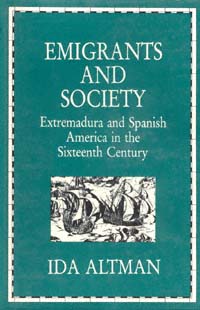 | Title: Emigrants and society: Extremadura and America in the sixteenth century Author: Altman, Ida Published: University of California Press, 1989 Subjects: History | European History | United States History Publisher's Description: The opening of the New World to Spanish settlement had more than the limited impact on individuals and society which scholars have traditionally granted it. Many families and young single people left the neighboring cities of Cáceres and Trujillo in the Extremadura region of southwestern Spain for the Indies. By maintaining ties with home and one another, and sometimes returning, these emigrants developed patterns of involvement that on one level were linked directly to place of origin and on another would come to characterize the emigration movement as a whole. Ida Altman shows that the Indies could and did have a substantial and perceptible effect on local society in Spain, as the New World quickly became an important arena of activity for people seeking new and better opportunities. Her findings suggest interesting conclusions regarding the relationship of sixteenth-century Spanish emigration to the larger movement of people from Europe to the Western Hemisphere in modern times. [brief] Similar Items |
| 6. | 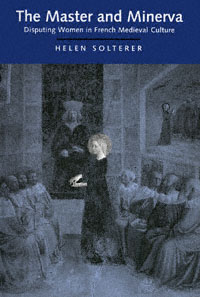 | Title: The master and Minerva: disputing women in French medieval culture Author: Solterer, Helen Published: University of California Press, 1995 Subjects: Literature | European Literature | Literary Theory and Criticism | Medieval Studies | Women's Studies | French Studies Publisher's Description: Can words do damage? For medieval culture, the answer was unambiguously yes. And as Helen Solterer contends, in French medieval culture the representation of women exemplified the use of injurious language.Solterer investigates the debates over women between masters and their disciples. Across a broad range of Old French literature to the early modern Querelle des femmes , she shows how the figure of the female respondent became an instrument for disputing the dominant models of representing women. The female respondent exploited the criterion of injurious language that so preoccupied medieval masters, and she charged master poets ethically and legally with libel. Solterer's work thus illuminates an early, decisive chapter in the history of defamation. [brief] Similar Items |
| 7. | 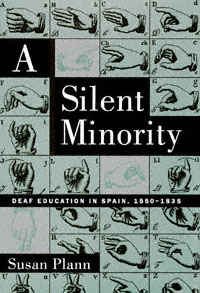 | Title: A silent minority: deaf education in Spain, 1550-1835 Author: Plann, Susan Published: University of California Press, 1997 Subjects: History | Language and Linguistics | Medieval History | European History | Education | European Studies | Medieval Studies | Cultural Anthropology | Cultural Anthropology Publisher's Description: This timely, important, and frequently dramatic story takes place in Spain, for the simple reason that Spain is where language was first systematically taught to the deaf. Instruction is thought to have begun in the mid-sixteenth century in Spanish monastic communities, where the monks under vows of silence employed a well-established system of signed communications. Early in the 1600s, deaf education entered the domain of private tutors, laymen with no use for manual signs who advocated oral instruction for their pupils. Deaf children were taught to speak and lip-read, and this form of deaf education, which has been the subject of controversy ever since, spread from Spain throughout the world.Plann shows how changing conceptions of deafness and language constantly influenced deaf instruction. Nineteenth-century advances brought new opportunities for deaf students, but at the end of what she calls the preprofessional era of deaf education, deaf people were disempowered because they were barred from the teaching profession. The Spanish deaf community to this day shows the effects of the exclusion of deaf teachers for the deaf.The questions raised by Plann's narrative extend well beyond the history of deaf education in Spain: they apply to other minority communities and deaf cultures around the world. At issue are the place of minority communities within the larger society and, ultimately, our tolerance for human diversity and cultural pluralism. [brief] Similar Items |
| 8. | 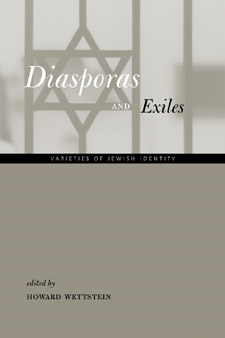 | Title: Diasporas and exiles: varieties of Jewish identity Author: Wettstein, Howard Published: University of California Press, 2002 Subjects: Jewish Studies | European History | Social and Political Thought | Sociology | Immigration Publisher's Description: Diaspora, considered as a context for insights into Jewish identity, brings together a lively, interdisciplinary group of scholars in this innovative volume. Readers needn't expect, however, to find easy agreement on what those insights are. The concept "diaspora" itself has proved controversial; galut, the traditional Hebrew expression for the Jews' perennial condition, is better translated as "exile." The very distinction between diaspora and exile, although difficult to analyze, is important enough to form the basis of several essays in this fine collection. "Identity" is an even more elusive concept. The contributors to Diasporas and Exiles explore Jewish identity - or, more accurately, Jewish identities - from the mutually illuminating perspectives of anthropology, art history, comparative literature, cultural studies, German history, philosophy, political theory, and sociology. These contributors bring exciting new emphases to Jewish and cultural studies, as well as the emerging field of diaspora studies. Diasporas and Exiles mirrors the richness of experience and the attendant virtual impossibility of definition that constitute the challenge of understanding Jewish identity. [brief] Similar Items |
| 9. | 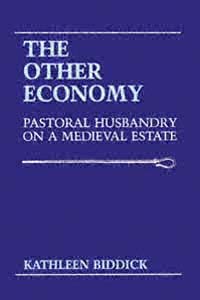 | Title: The other economy: pastoral husbandry on a medieval estate Author: Biddick, Kathleen Published: University of California Press, 1989 Subjects: History | European History | Medieval Studies Publisher's Description: While the cereal agriculture of medieval Europe has been studied exhaustively, the pastoral resources and livestock husbandry of medieval estates have been seriously neglected. Kathleen Biddick's examination of one estate, Peterborough Abbey, during several decades before and after 1100 and the first decade after 1300, brings a new balance to the subject of the medieval economy. Her pioneering methodology and the conclusions she reaches will interest archaeologists and agricultural historians as well as anthropologists, economists, and historians of early European development.Drawing on the archival records of the abbey, an estate that straddled the "classic" open-field agriculture of the English Midlands and the more pastorally-oriented farming of the English peat fens, Biddick describes in great detail how these farmers managed their herds and consumed and marketed livestock products such as meat, wool, hides, milk, and cheese. Commitment to conserving consumption strategies did not mean that the Abbey resisted market involvement and technological innovation. Large numbers of work and cart horses indicate the estate's economic interest in speedy haulage. Cereal yields, where they are calculable, compare favorably to the high-yielding demesnes of parts of Norfolk, the most agriculturally advanced region of medieval England. By showing how the Abbey coordinated its resources to enhance diversity and flexibility, The Other Economy enlarges our understanding of agrarian lordship and political control over resources in the medieval economy. [brief] Similar Items |
| 10. |  | Title: Jewish memories Author: Valensi, Lucette Published: University of California Press, 1991 Subjects: Jewish Studies | Postcolonial Studies Publisher's Description: Collective memory: a living, breathing gift from the past, less fragmentary than the recollections of any one individual, more personal by far than "history." The authors of Jewish Memories saw in the large numbers of Jews who migrated to France during the twentieth century the chance to retrieve a past that might otherwise be lost forever. Through dozens of interviews, they listened to men and women talking of their lives and the places they came from, and found an almost uncanny resonance of individual voices with one another. Individual memories became part of a shared memory, projecting major themes of the Jewish tradition - exile and the sense of loss, the duty to remember, and the transmission of Jewish experience to the next generations.Hélène H. tells of dropping the all-important family teakettle during a terrified race to escape skirmishing soldiers. Charles H. talks about the innocent love he shared with a non-Jewish girl who studied with him. Anna D. describes her wordless reunion with her wounded husband after World War II. From communities now disappeared, scenes of home and family life, occupations, happy times and holidays reinforce one another, and we can feel the painful nostalgia for a kind of existence no longer possible.Two distinct but parallel sets of memories run through the narrative, that of Sephardi and that of Ashkenazi Jews, all of whom found their way to France. They arrived from Tunisia, Turkey, Poland, and Russia, from poor and well-to-do families, almost always driven from their homes by difficult circumstances, often with their most recent memories filled with horror and tragedy. The desire to remember it all and to pass it on to others who will also remember shines from every page, and makes this book as memorable for general readers as it is valuable for anthropologists, sociologists, and historians. [brief] Similar Items |
| 11. | 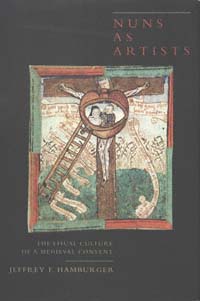 | Title: Nuns as artists: the visual culture of a medieval convent Author: Hamburger, Jeffrey F 1957- Published: University of California Press, 1997 Subjects: Art | Religion | Gender Studies | Art History | Medieval History Publisher's Description: Jeffrey F. Hamburger's groundbreaking study of the art of female monasticism explores the place of images and image-making in the spirituality of medieval nuns during the later Middle Ages. Working from a previously unknown group of late-fifteenth-century devotional drawings made by a Benedictine nun for her cloistered companions, Hamburger discusses the distinctive visual culture of female communities. The drawings discovered by Hamburger and the genre to which they belong have never been given serious consideration by art historians, yet they serve as icons of the nuns' religious vocation in all its complexity. Setting the drawings and related imagery - manuscript illumination, prints, textiles, and metalwork - within the context of religious life and reform in late medieval Germany, Hamburger reconstructs the artistic, literary, and institutional traditions that shaped the lives of cloistered women.Hamburger convincingly demonstrates the overwhelming importance of "seeing" in devotional practice, challenging traditional assumptions about the primacy of text over image in monastic piety. His presentation of the "visual culture of the convent" makes a fundamental contribution to the history of medieval art and, more generally, of late medieval monasticism and spirituality. [brief] Similar Items |
| 12. | 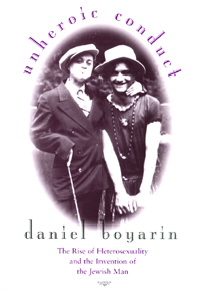 | Title: Unheroic conduct: the rise of heterosexuality and the invention of the Jewish man Author: Boyarin, Daniel Published: University of California Press, 1997 Subjects: Gender Studies | Jewish Studies | Social Theory Publisher's Description: In a book that will both enlighten and provoke, Daniel Boyarin offers an alternative to the prevailing Euroamerican warrior/patriarch model of masculinity and recovers the Jewish ideal of the gentle, receptive male. The Western notion of the aggressive, sexually dominant male and the passive female reaches back through Freud to Roman times, but as Boyarin makes clear, such gender roles are not universal. Analyzing ancient and modern texts, he reveals early rabbis - studious, family-oriented - as exemplars of manhood and the prime objects of female desire in traditional Jewish society.Challenging those who view the "feminized Jew" as a pathological product of the Diaspora or a figment of anti-Semitic imagination, Boyarin argues that the Diaspora produced valuable alternatives to the dominant cultures' overriding gender norms. He finds the origins of the rabbinic model of masculinity in the Talmud, and though unrelentingly critical of rabbinic society's oppressive aspects, he shows how it could provide greater happiness for women than the passive gentility required by bourgeois European standards.Boyarin also analyzes the self-transformation of three iconic Viennese modern Jews: Sigmund Freud, the father of psychoanalysis; Theodor Herzl, the founder of Zionism; and Bertha Pappenheim (Anna O.), the first psychoanalytic patient and founder of Jewish feminism in Germany. Pappenheim is Boyarin's hero: it is she who provides him with a model for a militant feminist, anti-homophobic transformation of Orthodox Jewish society today.Like his groundbreaking Carnal Israel , this book is talmudic scholarship in a whole new light, with a vitality that will command attention from readers in feminist studies, history of sexuality, Jewish culture, and the history of psychoanalysis. [brief] Similar Items |
| 13. | 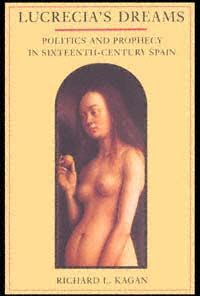 | Title: Lucrecia's dreams: politics and prophecy in sixteenth-century Spain Author: Kagan, Richard L 1943- Published: University of California Press, 1990 Subjects: History | Renaissance History | Women's Studies | Gender Studies Publisher's Description: Branded by the Spanish Inquisition as an "evil dreamer," a "notorious mother of prophets," the teenager Lucrecia de León had hundreds of bleak but richly imaginative dreams of Spain's future that became the stuff of political controversy and scandal. Based upon surviving transcripts of her dreams and on the voluminous records of her trial before the Inquisition, Lucrecia's Dreams traces the complex personal and political ramifications of Lucrecia's prophetic career. This hitherto unexamined episode in Spanish history sheds new light on the history of women as well as on the history of dream interpretation.Charlatan or clairvoyant, sinner or saint, Lucrecia was transformed by her dreams into a cause celébre , the rebellious counterpart to that other extraordinary woman of Golden Age Spain, St. Theresa of Jesus. Her supporters viewed her as a divinely inspired seer who exposed the personal and political shortcomings of Philip II of Spain. In examining the relation of dreams and prophecy to politics, Richard Kagan pays particular attention to the activities of the streetcorner prophets and female seers who formed the political underworld of sixteenth-century Spain. [brief] Similar Items |
| 14. | 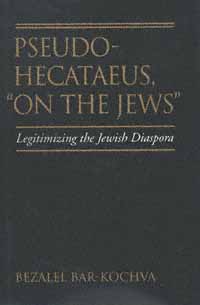 | Title: Pseudo-Hecataeus, On the Jews: legitimizing the Jewish diaspora Author: Bar-Kochva, Bezalel Published: University of California Press, 1997 Subjects: Jewish Studies | History | Ancient History | Jewish Studies Publisher's Description: Debate over the authenticity of "On the Jews" has persisted for nearly 1,900 years. Bezalel Bar-Kochva attempts to overcome this stalemate in his finely detailed and convincingly argued study that proves the forgery of the book and suggests not only a source for the text, but also a social, political, and cultural setting that explains its conception.Bar-Kochva argues that the author of this treatise belonged to the moderate conservative Jews of Alexandria, whose practices were contrary to the contemporary trends of Hellenistic Judaism. They rejected the application of Greek philosophy and allegorical interpretations of the Holy scriptures and advocated the use of Pentateuch Hebrew as the language for educating and for religious services. They showed a keen interest in Judea and identified themselves with the Jews of the Holy Land. "On the Jews," then, was the manifesto of this group and was written at the peak period of the Hasmonean kingdom. Its main purpose was to legitimize Jewish residence in Egypt, despite being explicitly prohibited in the Pentateuch, and to justify the continued residence of Jews there in a time of prosperity and expansion of the Jewish independent state. [brief] Similar Items |
| 15. | 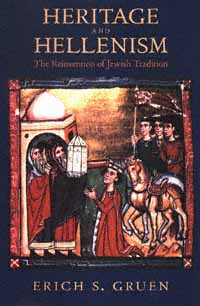 | Title: Heritage and hellenism: the reinvention of Jewish tradition Author: Gruen, Erich S Published: University of California Press, 1998 Subjects: Classics | Classical History | Classical Religions | Judaism | Ancient History | Jewish Studies Publisher's Description: The interaction of Jew and Greek in antiquity intrigues the imagination. Both civilizations boasted great traditions, their roots stretching back to legendary ancestors and divine sanction. In the wake of Alexander the Great's triumphant successes, Greeks and Macedonians came as conquerors and settled as ruling classes in the lands of the eastern Mediterranean. Hellenic culture, the culture of the ascendant classes in many of the cities of the Near East, held widespread attraction and appeal. Jews were certainly not immune. In this thoroughly researched, lucidly written work, Erich Gruen draws on a wide variety of literary and historical texts of the period to explore a central question: How did the Jews accommodate themselves to the larger cultural world of the Mediterranean while at the same time reasserting the character of their own heritage within it? Erich Gruen's work highlights Jewish creativity, ingenuity, and inventiveness, as the Jews engaged actively with the traditions of Hellas, adapting genres and transforming legends to articulate their own legacy in modes congenial to a Hellenistic setting. Drawing on a diverse array of texts composed in Greek by Jews over a broad period of time, Gruen explores works by Jewish historians, epic poets, tragic dramatists, writers of romance and novels, exegetes, philosophers, apocalyptic visionaries, and composers of fanciful fables - not to mention pseudonymous forgers and fabricators. In these works, Jewish writers reinvented their own past, offering us the best insights into Jewish self-perception in that era. [brief] Similar Items |
| 16. | 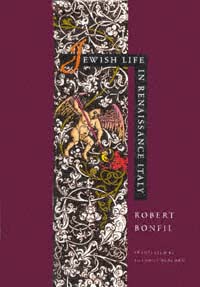 | Title: Jewish life in renaissance Italy Author: Bonfil, Roberto Published: University of California Press, 1994 Subjects: Jewish Studies | Renaissance History | European History Publisher's Description: With this heady exploration of time and space, rumors and silence, colors, tastes, and ideas, Robert Bonfil recreates the richness of Jewish life in Renaissance Italy. He also forces us to rethink conventional interpretations of the period, which feature terms like "assimilation" and "acculturation." Questioning the Italians' presumed capacity for tolerance and civility, he points out that Jews were frequently uprooted and persecuted, and where stable communities did grow up, it was because the hostility of the Christian population had somehow been overcome.After the ghetto was imposed in Venice, Rome, and other Italian cities, Jewish settlement became more concentrated. Bonfil claims that the ghetto experience did more to intensify Jewish self-perception in early modern Europe than the supposed acculturation of the Renaissance. He shows how, paradoxically, ghetto living opened and transformed Jewish culture, hastening secularization and modernization.Bonfil's detailed picture reveals in the Italian Jews a sensitivity and self-awareness that took into account every aspect of the larger society. His inside view of a culture flourishing under stress enables us to understand how identity is perceived through constant interplay - on whatever terms - with the Other. [brief] Similar Items |
| 17. | 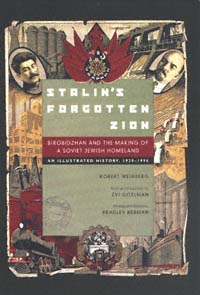 | Title: Stalin's forgotten Zion: Birobidzhan and the making of a Soviet Jewish homeland: an illustrated history, 1928-1996 Author: Weinberg, Robert E Published: University of California Press, 1998 Subjects: Jewish Studies | Russian and Eastern European Studies | History | Politics | Judaism Publisher's Description: Robert Weinberg and Bradley Berman's carefully documented and extensively illustrated book explores the Soviet government's failed experiment to create a socialist Jewish homeland. In 1934 an area popularly known as Birobidzhan, a sparsely populated region along the Sino-Soviet border some five thousand miles east of Moscow, was designated the national homeland of Soviet Jewry. Establishing the Jewish Autonomous Region was part of the Kremlin's plan to create an enclave where secular Jewish culture rooted in Yiddish and socialism could serve as an alternative to Palestine. The Kremlin also considered the region a solution to various perceived problems besetting Soviet Jews. Birobidzhan still exists today, but despite its continued official status Jews are a small minority of the inhabitants of the region. Drawing upon documents from archives in Moscow and Birobidzhan, as well as photograph collections never seen outside Birobidzhan, Weinberg's story of the Soviet Zion sheds new light on a host of important historical and contemporary issues regarding Jewish identity, community, and culture. Given the persistence of the "Jewish question" in Russia, the history of Birobidzhan provides an unusual point of entry into examining the fate of Soviet Jewry under communist rule. [brief] Similar Items |
| 18. | 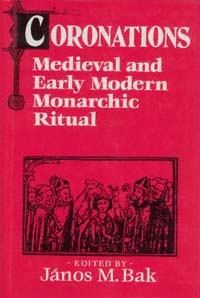 | Title: Coronations: medieval and early modern monarchic ritual Author: Bak, János M Published: University of California Press, 1990 Subjects: History | Medieval History Publisher's Description: Fascination with royal pomp and circumstance is as old as kingship itself. The authors of Coronations examine royal ceremonies from the ninth to the sixteenth century, and find the very essence of the monarchical state in its public presentation of itself. This book is an enlightened response to the revived interest in political history, written from a perspective that cultural historians will also enjoy. The symbolic and ritual acts that served to represent and legitimate monarchical power in medieval and early modern Europe include not only royal and papal coronations but also festive entries, inaugural feasts, and rulers' funerals.Fifteen leading scholars from North America, Britain, France, Germany, Poland, and Denmark explore the forms and the underlying meanings of such events, as well as problems of relevant scholarship on these subjects. All the contributions demonstrate the importance of in-depth study of rulership for the understanding of premodern power structures. Emphasis is placed on interdisciplinary approaches, drawing on the findings of ethnography and anthropology, combined with rigorous critical evaluation of the written and iconic evidence. The editor's historiographical introduction surveys the past and present of this field of study and proposes some new lines of inquiry. "For 'reality' is not a one-dimensional matter: even if we can establish what actually transpired, we still need to ask how it was perceived by those present." [brief] Similar Items |
| 19. | 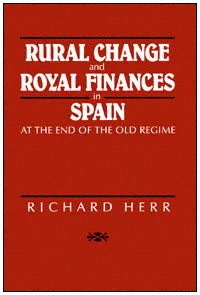 | Title: Rural change and royal finances in Spain at the end of the old regime Author: Herr, Richard Published: University of California Press, 1989 Subjects: History | European History Similar Items |
| 20. | 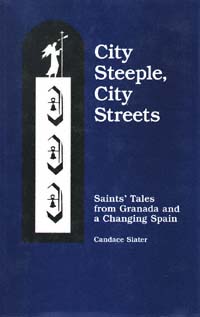 | Title: City steeple, city streets: saints' tales from Granada and a changing Spain Author: Slater, Candace Published: University of California Press, 1990 Subjects: Anthropology | Folklore and Mythology | Literary Theory and Criticism | European Literature Publisher's Description: Candace Slater's new book focuses on narratives concerning Fray Leopoldo de Alpandeire (1864-1956), a Capuchin friar from Granada and probably the most popular nonconsecrated saint today in all of Spain. In tracing the emergence of a group of contemporary legends about Fray Leopoldo, Slater discusses both the stories she tape-recorded in the streets of Granada and the friar's official biography. She underscores the essential pluralism of the tales, their undercurrent of resistance to institutional authority, and their deep concern for the relationship between past and present. Bearing witness to the subtlety and resilience of even the most apparently conservative folk-literary forms, these stories are not only about the role of saints and miracles in an increasingly secular and industrial society but, first and foremost, also about the legacy of the Franco years. [brief] Similar Items |